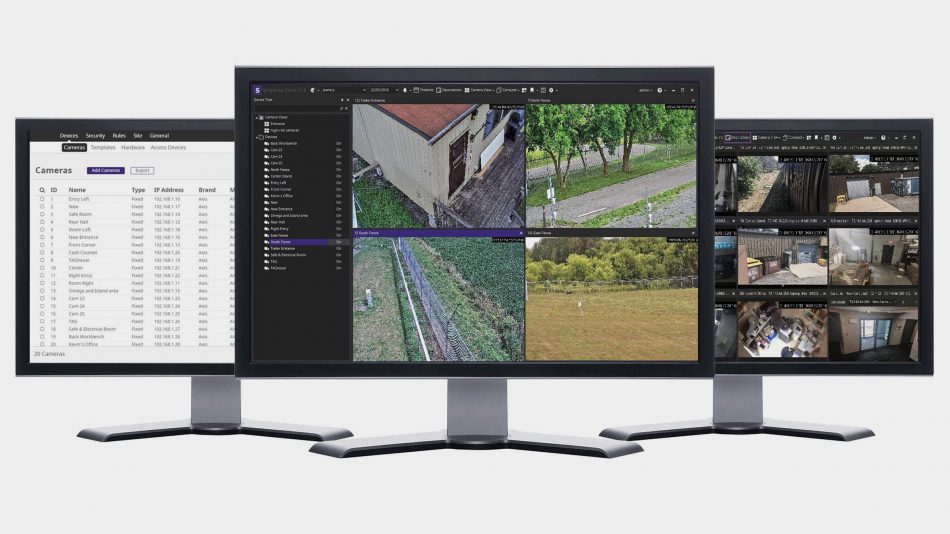Five Key Factors To Consider When Selecting A VMS

With so many options available, selecting video management software (VMS) that is right for your business’ security needs can be daunting. Here are five key factors to consider when selecting a VMS:
1. Total cost of ownership (TCO):
This is a concept that considers all the factors of a security system, not just the upfront purchase price. Make sure you understand potential hidden costs, such as:
- Licensing
- Sometimes a complicated licensing model makes understanding TCO difficult. Make sure you understand all licensing details so you don’t end up paying more year over year. For example, can you add additional cameras or operator clients, or is there an arbitrary limit that forces you to upgrade to a more costly license?
- Hardware requirements
- On larger projects, the architecture and performance can impact how many servers are needed, which impacts TCO. If your deployment consists of multiple sites and thousands of cameras, you’ll want a solution that will have the smallest hardware footprint possible while still delivering the necessary performance and redundancy. Take into account whether a 3rd party database is needed and how this influences performance and cost.
- Management
- In multi-site deployments, remote management tools with automatic camera firmware updates and system health monitoring capabilities can dramatically lower TCO. This can dramatically influence TCO after initial deployment.
2. Ease of use
- If a VMS is complicated to use, you will ultimately lose time and money through lost productivity and repeated user training. Make sure the system has an intuitive, user-friendly interface. Know what your most common operation will be, and make sure the VMS can handle it easily. Understand how operators will use the system and ensure that workflow is straightforward.
3. Security
- The security of the system is of utmost importance. Ask the vendor for results from “PEN tests” as a starting point.
4. Extensibility
- A VMS that doesn’t take future growth into consideration will be obsolete before you know it. Ensure your VMS is scalable and integrates (easily) with third-party vendors for such things as access control and video analytics.
5. Support options and responsiveness
- Make sure the VMS supplier offers the necessary technical support to help you maximize uptime. If available, consider purchasing a maintenance and support package that provides you with priority service.
With these five key factors in mind, you are ready to start looking for a VMS.
View Senstar Symphony VMS.
